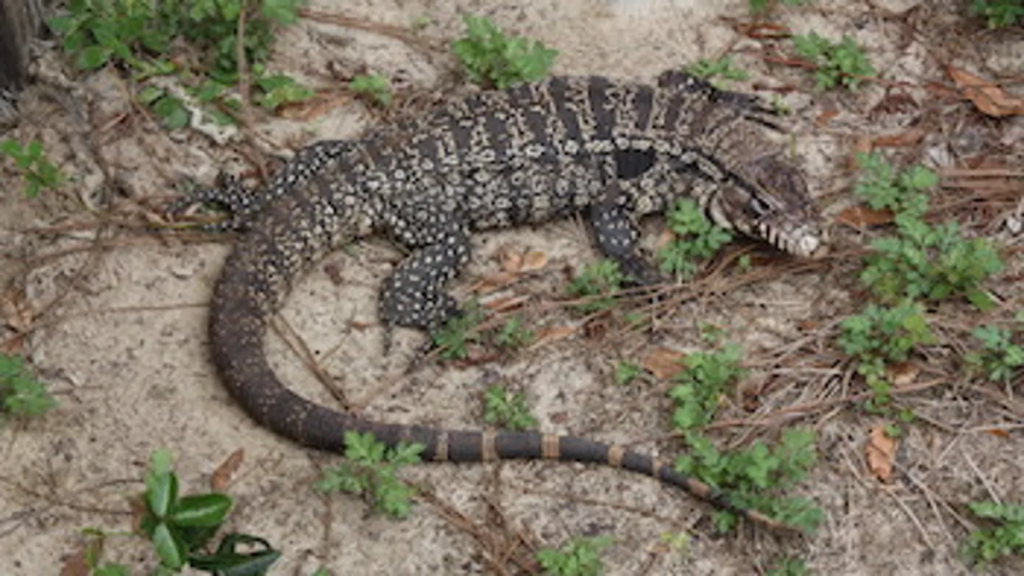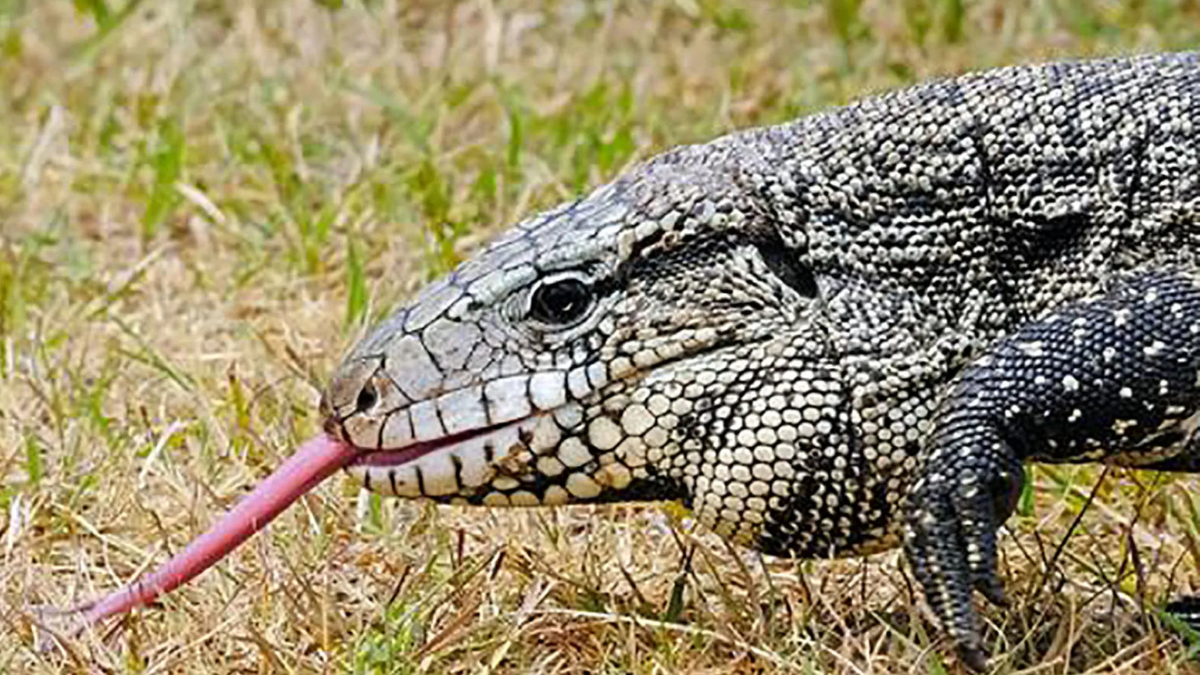The Georgia Department of Natural Resources (DNR) is raising public awareness about a serious ecological threat: the Argentine black and white tegu, a large, fast-growing lizard that has been spotted in several counties across the state.
Originally from South America, these reptiles are known for their resilience and appetite, posing a growing danger to native species and local ecosystems.
As part of a statewide educational campaign, wildlife biologists are urging residents to report sightings and avoid releasing pet tegus into the wild.
The DNR emphasizes that the lizards, while not typically aggressive toward humans, can severely disrupt Georgia’s natural balance.
What Are Tegus and Why Are They a Problem?
Argentine tegus (Salvator merianae) can grow up to four feet in length and weigh 10 to 15 pounds. Known for their intelligence and adaptability, they are often kept as exotic pets. Unfortunately, when released into the wild—whether intentionally or by escape—tegus become highly invasive.
According to the Georgia Department of Natural Resources, tegus are omnivores that eat a wide range of foods, including:
- Eggs from ground-nesting birds and reptiles
- Small mammals
- Fruits and vegetables
- Pet food and roadkill
The biggest concern is their impact on native wildlife, especially endangered species like the gopher tortoise, whose eggs and young are vulnerable to predation. Tegus are also hardy creatures that can survive Georgia winters by burrowing and going dormant—allowing populations to grow from year to year if left unchecked.

Where Are Tegus Being Found in Georgia?
Tegu sightings have been confirmed in Toombs, Tattnall, and Wayne counties, with reports increasing over the past few years. Georgia DNR officials believe these populations may be established or growing in the wild due to both accidental and deliberate releases.
Wildlife officials are encouraging residents in rural and suburban areas to remain vigilant and to report any potential sightings through the DNR’s wildlife observation platform. Trail camera footage, roadkill discoveries, and direct observations have all contributed to mapping the spread of the species.
“Each report helps us understand where tegus are becoming a problem and how we can respond,” said Dr. John Jensen, a senior wildlife biologist with the Georgia DNR’s Nongame Conservation Section.
Public Asked to Help Contain the Spread
The Georgia DNR has launched a proactive outreach campaign, providing resources to schools, landowners, and conservation groups. Residents are being asked not only to report tegus but also to refrain from releasing unwanted reptiles into the wild.
“While we understand some people can no longer care for these animals, it is illegal and dangerous to release them,” said Jensen. “Instead, we urge pet owners to contact licensed rescue organizations or local authorities.”
In addition to public awareness, the DNR is actively trapping tegus in known hotspots. Biologists are using baited live traps in efforts to curb the breeding population, especially before the spring and summer months when activity increases.
The Georgia Wildlife Resources Division provides additional guidance for safely identifying and avoiding contact with tegus, along with photos and contact forms for reporting.
What Can Residents Do?
To help prevent the spread of invasive tegus, the Georgia DNR recommends several important steps:
- Do not release exotic pets: This practice is both illegal and harmful to native wildlife.
- Report sightings immediately: Use the Wildlife Sightings Form or call the DNR Nongame Conservation Section.
- Secure outdoor food sources: Remove pet food, birdseed, or livestock feed that could attract tegus.
- Educate others: Share information with neighbors and local community groups to increase awareness.
Anyone who captures or finds a dead tegu is encouraged to contact the DNR so it can be documented and tested. Removing tegus from the wild without a wildlife license is permitted in Georgia if done legally and humanely.
Conclusion: A Growing Invasive Threat That Requires Public Vigilance
As Argentine tegus continue to establish themselves in Georgia, the Department of Natural Resources warns that controlling their spread will require cooperation from the public. These lizards, while fascinating in appearance, represent a serious threat to Georgia’s biodiversity and ecological health.
Through community reporting, public education, and targeted removal efforts, Georgia officials hope to limit the long-term impact of this invasive species before it becomes an irreversible problem. For more information or to submit a sighting, visit the Georgia DNR tegu awareness page.
Disclaimer – Our team has carefully fact-checked this article to make sure it’s accurate and free from any misinformation. We’re dedicated to keeping our content honest and reliable for our readers.
